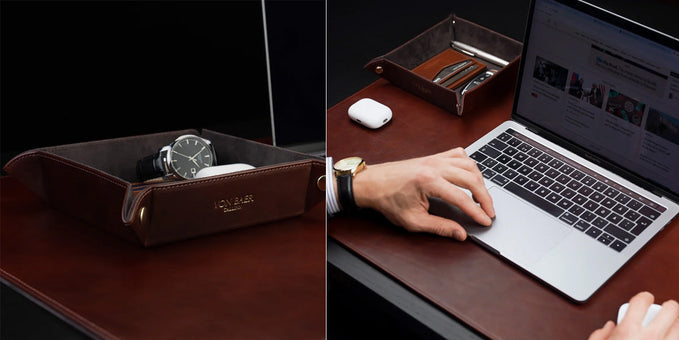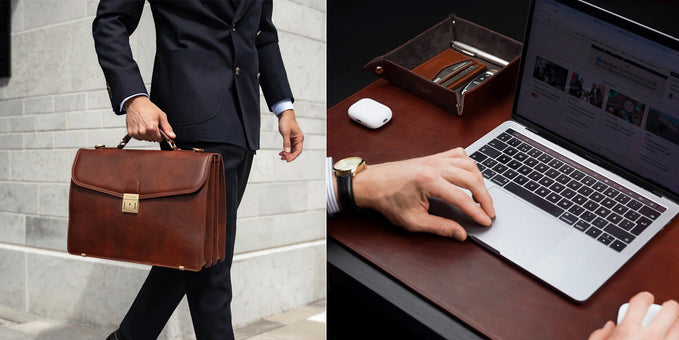How to wash leather

It is generally recommended to only wipe and spot-clean expensive leather items.
However, if you have a smooth leather purse or another item that requires thorough cleaning, you can consider washing it in a washer.
Ensure that you use the appropriate soap and cold water to prevent the leather from warping.
Alternatively, washing leather products by hand is a safer approach.
Take extra precautions to preserve and protect unfinished leather items.
Spot Testing: A Must-Do Before Using Any Product

It is crucial to perform a patch test before applying any cleaning product to the leather.
Choose a small, less noticeable area and test the product there. Allow a few minutes for the test area to dry and check for any color distortion or damage.
By performing the patch test technique, you can prevent potential harm to the leather item.
Here are some important steps to follow:
- Take a bowl with distilled water and add castile soap (capful) to create a solution.
- Dampen a piece of lint-free cloth with the soap solution.
- Wipe the leather surface, ensuring to rub with the grain to remove dirt. When dealing with stubborn dirt or grime, employ a circular motion to effectively remove it.
- Use a clean, damp cloth to remove any soap residue from the leather.
- Allow the leather to dry for a couple of hours.
- Finally, apply a small amount of conditioner onto a clean cloth and gently dab it onto the leather item.
Following these steps will help clean and condition your leather effectively while minimizing the risk of damage.
Hand Washing Leather

This is by far the best way to wash your leather products. Here are the steps (after spot testing – see above):
- Create a soapy water solution by pouring a small quantity of castile soap in a container/bowl of distilled water. Give the solution a good stir with a whisk or even your hand to spread the soap around and make some bubbles. Another option is to utilize a soap specifically designed for cleaning leather.
- In case you don't have a castile soap or a specialized leather cleaner on hand, a mild soap such as dish soap can be used as an alternative.
- Before applying the cleaning solution to more noticeable areas, it is essential to test it on a hidden spot to ensure compatibility.
- Dip a lint-free cloth into the cleaning solution. A microfiber cloth works best, but a normal dishcloth can be used if needed. Avoid using abrasive materials that can scratch the leather and create cloudiness in its finish.
- Use the cloth to remove the dirtiness from the leather, following the leather grain as you wipe. For areas with caked-on dirt or tough spots, use a circular motion to gently rub and remove the debris.
- Don’t over-saturate the leather with water, because excessive moisture can damage it. If the leather becomes too wet while cleaning, allow it to dry a bit before continuing.
- Remove soap residue and remaining dirtiness by using a clean rag dampened with clean water. It is crucial to thoroughly remove all soap to prevent drying out and cracking of the leather. Wipe all the cleaned leather surfaces carefully with the damp cloth.
- Allow the item to air dry completely by arranging it as it would normally rest on a hanger, chair, or drying rack. Don’t expose leather items directly to sunlight, because it can cause the fabric to dry out which leads to cracking.
- Treat the leather item with a suitable leather conditioner to restore its smooth texture and provide protection. Follow the directions on the conditioner for the best results. Generally, buff the conditioner into the leather using a clean and dry lint-free cloth.
- Over time, the natural oils in the leather can diminish, making it brittle. Regular cleaning can accelerate this process, so replenishing the oils with a leather conditioner is essential.
- Avoid using products like leather waves and mink oil when cleaning finished leather, as they can damage the appearance and polish of finished leather items.
Machine Washing Leather

When machine-washing a leather item, it's important to note that there is no guarantee it won't be damaged.
However, durable items like jackets or boots may be suitable for machine-washing.
Here are the steps to follow:
- Ensure your leather item is machine washable (most won't be) - consult the care instructions and manufacturer's website.
- Avoid washing brightly colored leather items, as the color may fade during the washing process. Additionally, be cautious when dealing with leather items that feature delicate seams or intricate detailing, as they can be vulnerable to damage.
- Obtain or make castile soap, which is a gentle soap suitable for leather. Pour ¼ cup of castile soap to the detergent dispenser of your washer. Ensure the water setting is set to "Cold."
- Add the leather item to the washer and choose the gentlest cycle available. To minimize potential damage during the washing cycle, you can include other black items so that they can absorb shock.
- If possible, turn the leather item inside out and ensure that all zippers are closed and fasteners are secured. This precautionary measure not only safeguards the visible portions of the leather but can also aid in stain removal.
- Start the wash cycle and monitor the leather item closely. Remove it from the washer immediately after the cycle finishes to prevent it from drying inside the machine. Drying leather in a crumpled or misshapen state may cause permanent deformation.
- Restore the item's shape by laying it flat or hanging it up. Smooth out any wrinkles or folds that formed during washing. If needed, you can gently stretch the leather while it's still wet to regain some length, but be cautious to avoid ripping or damaging it.
- Allow the leather item to air dry in a room away from direct sunlight. Direct sunlight can dry out the leather and lead to loss of suppleness. Increase airflow by opening windows, which can help decrease drying time.
- Avoid using any directed heat source like a hair dryer on the leather item. However, if you prefer to use a dryer, set it to the "no-heat" or "low" setting to prevent excessive heat exposure.
- Once the leather item is dry, apply leather conditioner to restore its texture and provide protection. Follow the instructions provided with the conditioner, but generally, buff it into the leather using a lint-free cloth or a paper towel. If you don't have a leather conditioner, you can lightly apply olive oil as a substitute.
By following these steps, you can attempt to machine-wash a leather item. However, it's essential to note the risks involved and exercise caution.
If your item is expensive or delicate, it's advisable to use spot cleaning methods or seek professional cleaning services to ensure its safety.
Washing Unfinished Leather Items

Unfinished leather is characterized by its rough-looking surface and is commonly found on items that experience tear and wear, such as horse saddles, construction boots and baseball gloves.
Here's how to clean and treat unfinished leather:
- Removing dirt using saddle soap:
Grab a clean, damp cloth and put a small amount of saddle soap on it. Work up a good lather on the leather surface, ensuring you cover the entire area. Once lathered, rinse the soap off with water. Be cautious not to oversaturate the leather. If you observe the leather getting soaked with water, give it some time to dry naturally before proceeding further to avoid any potential harm. - For heavy dirt buildup and hard-to-reach areas, utilize a brush with soft bristle: In cases where there are crevices or stubborn dirt, a soft bristle brush made of nylon can be used. Before using the brush, test it on an inconspicuous spot to ensure it doesn't damage the leather. Use gentle strokes to clean the affected areas.
- Remove any remaining lather by dampening a cloth that is clean and free of lint. cloth with water and wring out any excess moisture. Use this cloth to thoroughly wipe away the remaining soap or dirt from the leather. It's important to be meticulous in this step, as leftover soap can harm and dry out the surface of the leather.
- Leave the leather item to dry overnight: Unfinished leather has a tendency to absorb water compared to finished leather. Allow the item to air dry for at least 8 hours or overnight. Ensure it is placed in a well-ventilated area away from direct heat sources or sunlight.
- Treat the leather: Once the leather item is completely dry, apply a leather preservative like mink oil. Pour a generous amount of the oil on the surface of the dried item and use the remaining cloth to work the oil into the leather. Pay extra attention to cracks and areas that appear worn. This treatment will help protect and nourish the unfinished leather.
By following these steps, you can effectively clean and treat unfinished leather items, preserving their appearance and prolonging their lifespan.
Related leather care guides:
- Repair cat scratches on leather
- Remove water stains from leather
- Clean leather wallet & remove stains/smells
- Remove ink from leather
- Get smell out of leather
- Remove stains from leather shoes
- Clean suede leather bag
- How to reform a leather bag
- How to maintain leather bags
- Repair cracked leather
- Wet leather
- How to clean leather bag
- How to restore faded leather bag
Can leather be safely washed in a washer?
For cleaning leather at home, the most secure method is hand washing. This allows you to have complete control over the process, ensuring that your leather item receives careful treatment.
It is advisable to avoid washing expensive leather garments in the washer as it can potentially cause damage, shrinking, or discoloration.
However, faux leather can generally be safely washed in the washer using a gentle cycle and cold water.
Remember to always check the care instructions provided by the manufacturer and perform a small test before proceeding with the full cleaning process to avoid any unwanted consequences.
If you have concerns or uncertainties, it's best to seek professional advice or utilize specialized leather cleaning services to preserve the quality of your valuable leather items.
Is it safe to dry clean leather?
While it may seem logical to assume that cleaning leather clothes via dry cleaning is effective in limiting moisture, it can actually be detrimental to the state of your leather garments.
Cleaning leather without proper hydration can cause it to lose its flexibility and dry out, leading to eventual cracking and damage.
Additionally, the chemicals used during the dry-cleaning process can be harmful to leather and cause further harm. If you require professional assistance, it is advisable to avoid dry cleaners and instead look for experts who specialize in leather cleaning.
They will have the necessary knowledge and tools to safely clean and maintain your leather clothes, ensuring their longevity and preserving their quality.
Read our related leather articles:
- Buying a leather bag
- How to burnish leather
- Is leather waterproof?
- How to waterproof your leather bag
- How long does a leather bag last?
- Leather
- Leather guide for beginners
- Where does leather come from
- Leather grades
- How is leather made
Which type of leather is the hardest to clean?
Safe and proper cleaning procedures vary for different types of leather. Among them, suede is widely regarded as the most challenging to clean due to its delicate nature.
The unique texture and sensitivity of suede require extra care and specific cleaning techniques. In terms of colored leather types, white leather presents a particular challenge as it tends to show dirt and dust more prominently.
The light color makes any soiling or staining easily noticeable, requiring regular cleaning and maintenance to keep it looking its best. When dealing with suede or white leather, it is advisable to consult professional leather cleaners or follow specialized cleaning instructions tailored to these specific types of leather.
Their expertise can ensure proper care and effective cleaning without compromising the integrity and appearance of the material.
Related articles:
- How to stretch leather
- How to shrink leather
- How to soften leather
- How to fix faux leather peeling
- Bonded Leather Peeling
- Bleach On Leather
- How To Fix Scuffed Leather
- How To Rehydrate Leather
- How To Stiffen Leather
- How To Restore Leather
- How To Dye Leather
- How To Get Wrinkles Out Of Leather
- How To Clean Leather
- How To Clean Leather Purse
- Stitching Leather
Conclusion
We hope you enjoyed our article on how to wash leather.
If you have any questions or comments, contact us at info@vonbaer.com, or leave them in the comments.
Want to read more? Check out our Leather pages here.
Related articles:
- How To Clean Mold off Leather
- How To Clean Faux Leather
- How To Repair Leather
- Leather Burning
- Best Leather Cleaners & Conditioners
- How To Get Sharpie off Leather
- How To Clean Suede
- DIY Leather Conditioner
- Wet Molding Leather
- Best Leather Oil
- How To Clean White Leather
- How To Get Oil Out of Leather
- Clean Leather Car Seats

Author: Albert Varkki
Albert Varkki is the co-founder of Von Baer. He understands leather products as a consumer, supplier, and a manufacturer, helping you with the inside knowledge you need, to choose the perfect leather product for you.
We strive for the highest editorial standards, and to only publish accurate information on our website.
Leave a Comment
Your email address will not be published.






